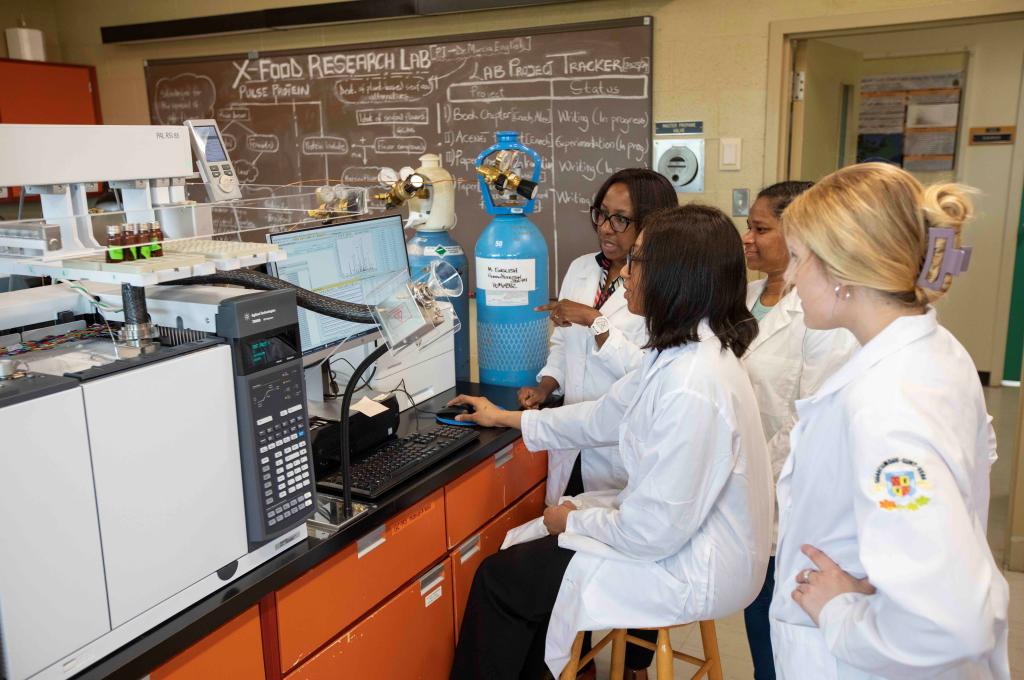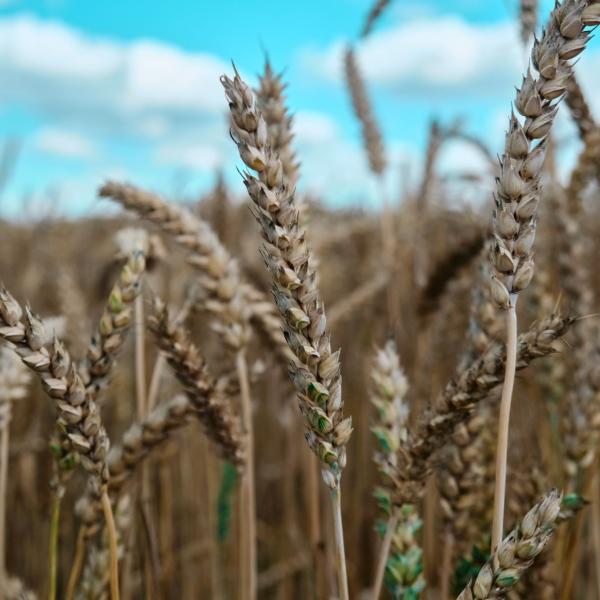Addressing an industry-wide issue
At St. Francis Xavier University, a group of Marcia English’s food science students ran into those “off-flavours” when they set out to create a frozen dessert made from Nova Scotia beans. English, who is Canada Research Chair in Protein and Flavour Chemistry, couldn’t tell them how to get rid of it. So she reached out to Pulse Canada, a national association representing pulse growers, traders and processors.
She learned they weren’t alone — and it was an issue the industry was keen to address. “For us, this is really important as we grow this market,” says Tanya Der, Pulse Canada’s director of diversification and market insights. “We don’t want people to be put off by the flavour.”
When English heard that, her ears perked up. “I thought, wow, what an opportunity here.”
So she got to work tracking down the culprits. The problem stems from naturally occurring enzymes found in beans that break down fats. That process, in turn, creates volatile compounds that affect taste and aroma.
But it’s not a simple picture. Every variety of bean behaves differently. Even the same types can produce different aroma profiles depending on growing conditions and where in Canada they’re farmed. Flavours can also change during processing and storage. “Food is such a complex matrix,” English explains. “So many interactions can take place.”
This is really important as we grow this market … We don’t want people to be put off by the flavour.
– Tanya Der, Director of Diversification and Market Insights, Pulse Canada
Sniffing for solutions to off-flavours
To understand those interactions, English and her team of students are using a gas chromatograph-mass spectrometer (GC-MS) funded in part by the CFI and Research Nova Scotia. They start by heating flour made from beans, converting it into a gaseous state. They then pass the gas through the machine, which detects the various volatile compounds present.
The GC-MS also comes equipped with an olfactory port, allowing researchers to smell samples in real time so they can determine which compounds are associated with which aromas. “The chemical footprint is great, but the human nose is sort of the gold standard,” says English. “We’re using the two together, which is quite a powerful tool.”
But identifying the source of smells is just half the equation. English is also investigating whether pre-treating the beans — through germination, soaking, fermentation or other methods — reduces or changes the presence of compounds contributing to unpleasant aromas.
So far, fermentation has proved most promising. And as a side benefit, the lactic acid bacteria they’re using to drive fermentation also improves gut health.
Finding new markets for Canadian pulses
English’s research isn’t limited to removing problematic flavours and aromas in pulse proteins. Her lab recently received funding from the U.S.-based Good Food Institute to develop plant-based seafood alternatives. In this case, their job is finding plant-based ingredients to mimic the aroma of Atlantic salmon — and its texture.
As if those challenges weren’t enough, English wants to mimic the nutritional properties of salmon. That means getting the right blend of pea and faba beans to provide all the essential amino acids and adding plant-based omega-3 fatty acids.
“We’re trying to incorporate these ingredients as well to ensure that our formulation is not just another product, but it’s also a healthy option for consumers,” she says.
It’s a complex undertaking, but English loves her work. “It’s a great way to impact the food that goes on the plate of Canadians.”
It’s also a great way to support Canada’s 25,900 pulse producers. “That research is really important,” says Der. “We’ve built up a lot of capacity to make these ingredients, and so now we want to make sure that we find new markets that will take [them].”

Without this equipment, our work would have been stalled … We hope that we’ll continue to grow and continue to produce good science, good products and make our impact broader — not just in Canada, but globally as well.
– Marcia English, St. Francis Xavier University
The research project featured in this story also benefits from funding from the Natural Sciences and Engineering Research Council of Canada and the Canada Research Chairs Program.






